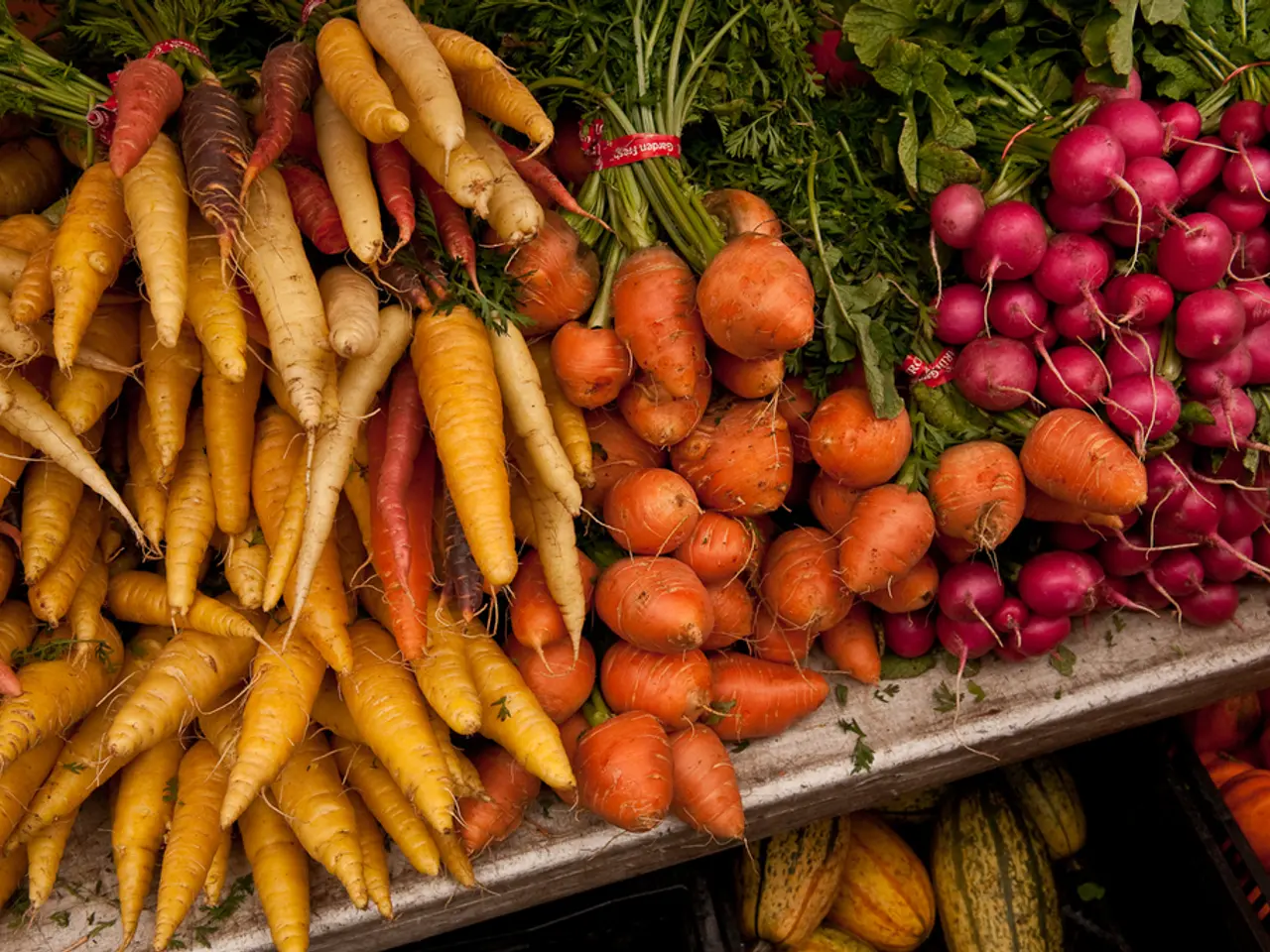Winter Employment Opportunities in the Fruit and Vegetable Sector
In the heart of winter, the vegetable patch doesn't have to fall dormant. With a little preparation and the right protective measures, a bounty of hardy crops can be grown and harvested throughout the season.
Spinach, known for its resilience, can grow well into early winter. When protected by snow or plastic tunnels, it can survive through winter and resume growth in early spring, producing sweet-tasting leaves. Kale, another cold-tolerant green, can survive frost and continue producing leaves. Both biennial and perennial varieties are available, with some types lasting several years.
Swiss Chard (Silverbeet) is very resilient and tolerates mild freeze. Cooler temperatures make its leaves more tender. It produces continually until hard frost and grows well in poor soil. Collard Greens, extremely cold-hardy, can tolerate frost, freezes, and some snow. Leaves get sweeter after frost, making them suitable for extended winter harvesting with some protection.
Lettuce and Arugula, fast-growing cool-season greens, can be harvested in 30-40 days after sowing and do well in winter with protection. Other vegetables like beetroot, early cabbage, onions, radishes, carrots, leeks, bok choy, peas (Snow Peas), and herbs such as chives, dill, parsley, and chervil can also be grown in winter with some cold protection.
Protection methods like using plastic tunnels, cold frames, mulch, or snow cover help extend the growing season and shield plants from freezing temperatures.
Winter is also an ideal time for soil preparation. Ash from bonfires or wood burners can be used as a plant food and soil improver, especially for growing brassicas. Seed potatoes can be chitted indoors in a cool, well-lit, frost-free place to help them get a head start once they are planted out. Onions can be sown indoors at the beginning of the new year or grown from seeds by covering them with vermiculite, watering them, and keeping them in a well-lit area at 10-15°C.
Covered soil is ideal in early March for making an early direct sowing of beetroot, spinach, chard, salad leaves, and (if the soil is free-draining) carrots and parsnips. It's good to check netting over crops each time in winter to prevent gaps.
For those limited on space, rhubarb can be grown in a large pot weighed down with a brick. To force rhubarb, clear the soil around the base of the plant, remove weeds and old growth, and apply a 5cm thick mulch of compost. Cover the clump with a dustbin, large bucket, or large pot, and wait for long, sweet, pink shoots to grow in about 8 weeks.
However, six crops should be avoided for storage: cauliflower, celery, cucumber, melon, pumpkin, and tomatoes. These crops are not suitable for winter planting or storing due to their sensitivity to cold temperatures. It's essential to check stored crops regularly for slowly-rotting produce.
Stored ash can be used as a food by sprinkling it around the base of fruit bushes (except blueberries) and trees towards the end of winter, just before buds start breaking. For large amounts of ash, spread it over the soil where you are going to grow brassicas such as swedes, cabbages, and kale, at around 50g per square metre at the end of winter.
In summary, hardy leafy greens like spinach, kale, collard greens, and Swiss chard are top choices for winter gardening, complemented by root vegetables and certain herbs, all benefiting from protective measures to survive cold weather. With the right care and planning, winter gardening can provide a plentiful harvest even in the heart of the cold season.
Soil preparation is crucial for a successful winter garden, as ash from bonfires or wood burners can be used as a plant food and soil improver, especially for growing brassicas. With protective measures like plastic tunnels, cold frames, mulch, or snow cover, home-and-garden favorites such as spinach, kale, and Swiss chard can thrive and grow throughout the winter, their resilience enhancing the lifestyle of the home gardener.




